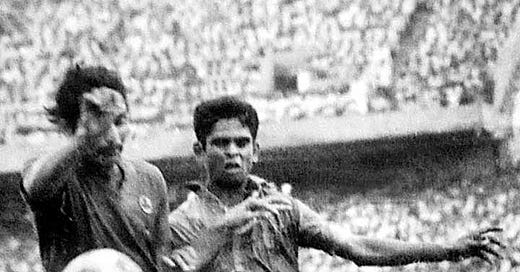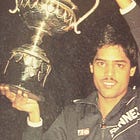Welcome to the Brown History Newsletter. If you’re enjoying this labor of love, please do consider becoming a paid subscriber. Your contribution would help pay the writers and illustrators and support this weekly publication. If you like to submit a writing piece, please send me a pitch by email at brownhistory1947@gmail.com.
Don’t forget to check out our SHOP and our Podcast

The Kolkata Derby: Asia’s Oldest and Fiercest Football Rivalry
In the mid-1800s, when British colonists introduced football to India as a recreational sport for their stationed army and navy officers, they could hardly have anticipated a momentous event that would occur decades later. On a scorching July day, a British team faced an unexpected defeat against an Indian team whose barefoot players skillfully outplayed their colonial counterparts. By 1911, with the fervor of independence simmering across the streets of India and freedom slogans echoing in every alley, a historic match was set between a newly formed Indian club and the British East Yorkshire Regiment for the IFA Shield Cup Final. According to Reuters, around 80,000 spectators gathered at the stadium, though most could not see the match directly. The excitement was so intense that those in the crowd who couldn't see the action relied on the movements of kites flying above the stadium to follow the game.







